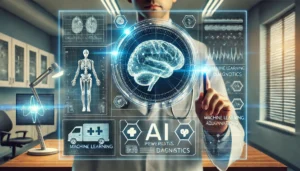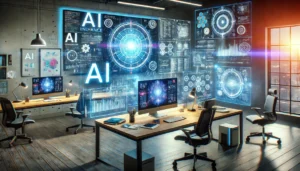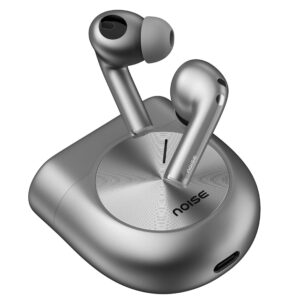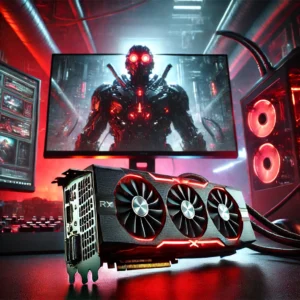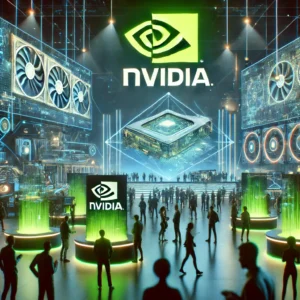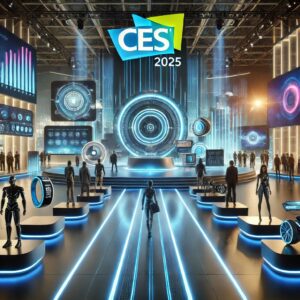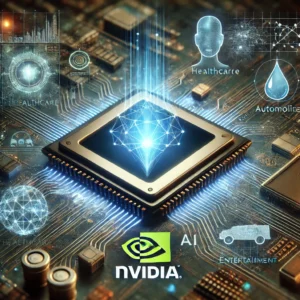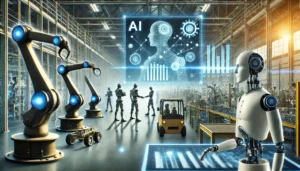Nvidia’s Vision of AI and Robotics is Revolutionizing the Future of Industry
Introduction to Nvidia’s Vision
In the rapidly evolving world of technology, Nvidia stands out as a beacon of innovation, particularly in artificial intelligence (AI) and robotics. Known initially for its groundbreaking work in graphics processing units (GPUs), Nvidia has transformed its vision to focus on AI and robotics, promising a future where industries are smarter, more efficient, and incredibly interconnected.
The Evolution of Nvidia’s Strategy
Nvidia’s journey began with a focus on gaming graphics, but as AI technology started to surge, the company quickly pivoted to become a leader in AI research and development. This strategic shift has allowed Nvidia to stay ahead in an increasingly competitive tech landscape.
Overview of AI and Robotics in Modern Industry
Today, AI and robotics are integral to industries such as manufacturing, healthcare, and transportation. These technologies are not just enhancing productivity; they are redefining the very processes that drive these sectors, thanks to innovations from companies like Nvidia.
Nvidia’s Pioneering Role in AI Development
Nvidia has become synonymous with AI development, thanks to its robust platforms and tools that support researchers and developers worldwide.
Nvidia’s AI Platforms and Tools
Nvidia’s GPUs as the Backbone of AI
GPUs have long been the workhorses of AI computations. Nvidia’s GPUs, known for their parallel processing power, have become essential in training complex AI models. These GPUs are the backbone of modern AI applications, from simple algorithms to advanced neural networks.
Nvidia’s CUDA Platform
CUDA (Compute Unified Device Architecture) is another Nvidia innovation that has revolutionized AI development. It allows developers to use the power of Nvidia GPUs for general-purpose computing, making AI development more accessible and efficient.
Deep Learning and Nvidia’s Contribution
Key Achievements in AI Research
Nvidia’s contribution to deep learning has been monumental. The company’s GPUs are widely used in deep learning tasks, enabling significant advancements in fields like image and speech recognition, natural language processing, and more.
Robotics: The New Frontier for Nvidia
As AI continues to advance, robotics is emerging as the next big frontier, and Nvidia is at the forefront of this revolution.
Nvidia’s Robotics Initiatives
Nvidia’s Isaac Platform
Nvidia’s Isaac platform is a comprehensive toolkit for developing and deploying AI-powered robots. It provides a suite of software, simulation tools, and hardware accelerators to streamline the development of intelligent robots.
AI-Powered Robots in Various Sectors
From manufacturing to logistics, AI-powered robots developed using Nvidia’s technology are becoming ubiquitous. These robots perform tasks ranging from simple assembly to complex problem-solving, significantly enhancing operational efficiency.
The Role of Simulation in Robotics
Simulation is crucial in robotics, allowing developers to test and refine their robots in virtual environments before deploying them in the real world. Nvidia’s simulation tools enable precise modeling of real-world scenarios, ensuring that robots perform optimally in various conditions.
Transforming Industries with AI and Robotics
Nvidia’s AI and robotics technologies are not just theoretical; they are actively transforming industries worldwide.
Manufacturing Sector
Automation and Efficiency
In manufacturing, Nvidia’s AI and robotics solutions are driving automation to new levels. Robots equipped with AI can perform repetitive tasks with higher accuracy and speed than human workers, reducing costs and increasing efficiency.
Predictive Maintenance
AI also plays a crucial role in predictive maintenance. By analyzing data from machinery, Nvidia’s AI solutions can predict when equipment is likely to fail, allowing for timely maintenance and avoiding costly downtime.
Healthcare Innovations
AI in Medical Imaging
In healthcare, Nvidia’s AI technology is revolutionizing medical imaging. AI algorithms can analyze medical images with remarkable accuracy, aiding in early detection and diagnosis of diseases like cancer.
Robotics in Surgery
Robotic surgery is another area where Nvidia’s technology shines. AI-powered surgical robots offer precision that surpasses human capabilities, leading to better patient outcomes and shorter recovery times.
Transportation and Autonomous Vehicles
AI Driving the Future of Mobility
In transportation, Nvidia’s AI solutions are paving the way for autonomous vehicles. These vehicles rely on complex AI algorithms to navigate safely and efficiently, promising a future where human error is minimized on the roads.
Challenges and Opportunities in AI and Robotics
While the potential of AI and robotics is immense, there are challenges that Nvidia and the broader industry must address.
Ethical Considerations
The ethical implications of AI and robotics are significant. Issues such as job displacement, data privacy, and AI decision-making require careful consideration to ensure these technologies benefit society as a whole.
Technological Hurdles
Despite the advancements, there are still technological hurdles to overcome. Developing AI that can learn and adapt in real-time, ensuring the safety of AI-powered systems, and improving energy efficiency are ongoing challenges.
Market Opportunities for Nvidia
For Nvidia, these challenges also present opportunities. By addressing these issues head-on, Nvidia can continue to lead in the AI and robotics space, creating innovative solutions that set new industry standards.
Nvidia’s Partnerships and Collaborations
Nvidia’s success in AI and robotics is also due to its strategic partnerships and collaborations.
Strategic Alliances in AI
Nvidia collaborates with leading tech companies, academic institutions, and research organizations to advance AI technology. These alliances help in pooling resources and expertise to tackle complex AI challenges.
Collaborative Projects in Robotics
In robotics, Nvidia partners with companies across various sectors to develop and deploy AI-powered robots. These collaborations accelerate innovation and bring cutting-edge robotic solutions to market faster.
The Future Outlook of Nvidia in AI and Robotics
The future of Nvidia in AI and robotics looks promising, with several exciting developments on the horizon.
Upcoming Innovations
Nvidia continues to invest heavily in research and development, with several upcoming innovations that promise to push the boundaries of what AI and robotics can achieve.
Long-Term Vision and Goals
Nvidia’s long-term vision is to create a world where AI and robotics seamlessly integrate into everyday life, enhancing productivity and quality of life across all sectors.
Conclusion
Nvidia’s vision for AI and robotics is not just about technological advancement; it’s about transforming industries and shaping the future of our world. With its pioneering innovations, strategic partnerships, and commitment to ethical AI, Nvidia is set to remain a leader in this exciting frontier.
FAQs
How is Nvidia contributing to AI development?
Nvidia contributes to AI development through its powerful GPUs, the CUDA platform, and various AI research initiatives, enabling advancements in deep learning, neural networks, and AI applications across industries.
What role does Nvidia play in robotics?
Nvidia plays a significant role in robotics by providing platforms like Isaac, which helps develop AI-powered robots used in sectors like manufacturing, healthcare, and logistics.
Which industries are most affected by Nvidia’s AI and robotics advancements?
Industries like manufacturing, healthcare, and transportation are significantly impacted by Nvidia’s AI and robotics advancements, leading to improved efficiency, automation, and innovation.
What are the challenges Nvidia faces in AI and robotics?
Nvidia faces challenges such as ethical considerations, technological hurdles, and ensuring the safe and efficient deployment of AI-powered systems in real-world applications.
What can we expect from Nvidia in the future?
In the future, we can expect Nvidia to continue leading in AI and robotics, introducing new innovations, expanding its partnerships, and shaping the future of various industries with advanced technologies.
___________________________________________________________________________________________________
Please don’t forget to leave a review.
on Techcyclohub
___________________________________________________________________________________________________
Book Recommendations:
- Ahttps://shorturl.at/4G6iFI Superpowers: China, Silicon Valley, and the New World Order by Kai-Fu Lee
- Life 3.0: Being Human in the Age of Artificial Intelligence by Max Tegmark
- Robotics: Everything You Need to Know About Robotics from Beginner to Expert by Peter Mckinnon
- Artificial Intelligence: A Guide to Intelligent Systems by Michael Negnevitsky
- The Fourth Industrial Revolution by Klaus Schwab

